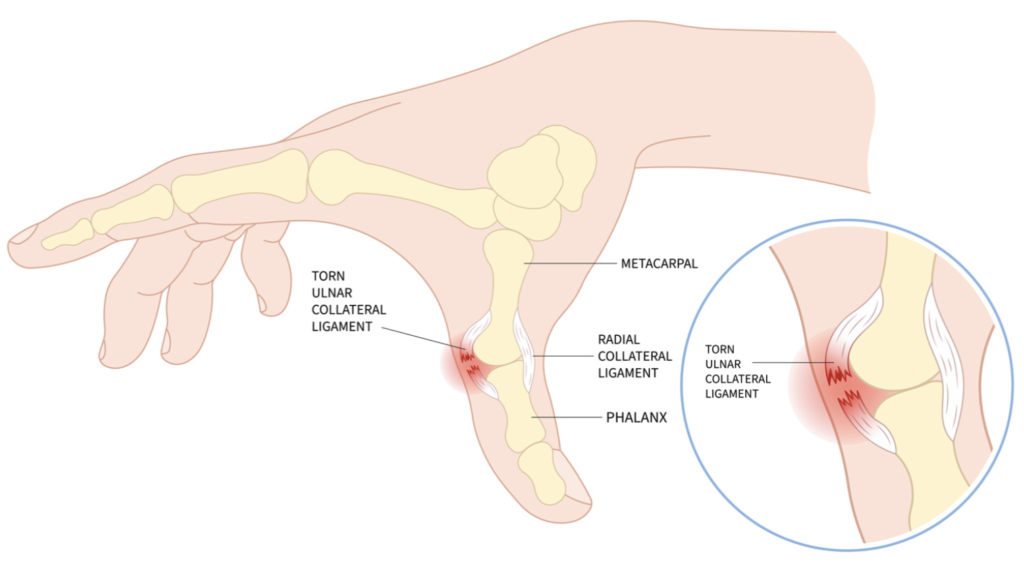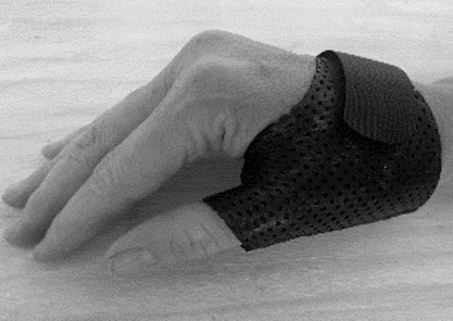Discover the ins and outs of joint dislocations, from the common finger and thumb injuries to shoulder dislocations. Learn about symptoms, treatments, and how to seek professional help.
7 min read 15 Sep 2023
Dislocations occur when the bones of a joint, such as your thumb, are forced out of their normal position. This causes significant trauma to the surrounding tissues and affects your ability to perform everyday tasks, especially holding or gripping objects and playing sports. Thumbs, fingers and shoulders are the most commonly affected joints.
Understanding dislocations
What are dislocations?
A dislocation occurs when a large force pushes the bone out of its normal position within the joint. With the change in the bone’s physical position, other tissues, particularly the ligaments, are likely to be torn. The bones are now out of alignment and the soft tissues surrounding the joint are damaged. Normal movement of the joint will be affected.
It is important that you seek immediate medical attention to realign the bones as soon as possible. Sometimes it is possible to move the joint, but this needs to be checked as otherwise your movement may be permanently restricted. The bone can be dislocated forwards, backwards or sideways. Dislocations cause a lot of damage to the ligaments around the joint and can make your joint unstable.
Dislocations can happen to any joint. Thumb, finger and shoulder dislocations are usually the result of an accident, fall or sports injury. They are very limiting to your functional and daily activities, especially your ability to play sports and hold objects. If your thumb is dislocated, it is very difficult to write, grip and hold objects without pain and discomfort. It can be quite debilitating and painful.
Common symptoms of a dislocation
Regardless of the joint, the symptoms of dislocation are similar:
The 3 most common types
Finger dislocations
When a finger is dislocated, the most commonly affected joint is the middle one, called the proximal interphalangeal joint (PIPJ). These dislocations often push the joint dorsally, away from the palm of the hand. Such an injury causes instability in your middle knuckle, resulting in excessive side-to-side and up-and-down movement, which can make it painful to grip or hold objects for prolonged periods.
The main causes of finger dislocation are accidents, falls or sports injuries. A dorsal finger dislocation typically involves tearing the volar plate – a thick ligament that prevents your finger from hyperextending or bending backwards – and at least one collateral ligament. The volar plate plays a crucial role in providing stability to the PIPJ, ensuring that force is properly transmitted through your finger, allowing you to carry out everyday activities.
Finger dislocations can also be associated with an avulsion fracture of the middle or proximal phalanx. Finger PIPJ dislocations are often overlooked and there is a general misconception – both in the medical world and in the public – that they heal on their own. They often present late and are misdiagnosed as finger sprains. So it’s important to recognise these injuries and get the right treatment.
Thumb dislocations
A dislocated thumb is often referred to as a Skier’s Thumb or Gamekeeper’s Thumb. The most common mechanism of injury is when the thumb is caught or pulled backwards.
A typical scenario is a skiing accident where the strap of the ski gets caught and pulls the thumb backwards when falling off the skis. The joint affected is usually the metacarpophalangeal joint (MCPJ) of the thumb. Specifically, the ulnar collateral ligament (UCL) is torn during such dislocations.
The thumb is critical to the function of your hand. Its joints and ligaments provide stability to the hand, facilitating activities such as writing, picking up objects and providing a stable thumb post for gripping objects.
A thumb dislocation can result in a Stener lesion. This is where the ulnar collateral ligament is either torn or avulsed from the proximal phalanx. The torn segment or flap shifts outside the aponeurosis of the thumb adductor muscle, making it unable to attach to the other side of the ligament or bone. This misalignment prevents proper healing. Diagnosis of a Stener lesion requires ultrasound, followed by surgical correction.
Ulnar collateral ligament injury

Shoulder dislocations
The most common type of shoulder dislocation is the anterior dislocation, where the shoulder is displaced forward. Anterior shoulder dislocations are common, especially in throwing sports. The less common posterior type is where the shoulder is dislocated backwards.
A dislocated shoulder is usually very painful because the head of the humerus is forced out of its socket. This misalignment is immediately noticeable as a distinct bulge becomes visible. The muscles surrounding the shoulder are stretched unnaturally and often spasm in response.
There may be damage to other shoulder structures like the muscles, blood vessels, bones, tendons, ligaments, and nerves.
How to address a dislocation
Immediate management
If you are injured in a sport or fall and feel pain in your finger, thumb or shoulder, try to gently return the joint to its natural position. This will help relieve some of the pain and discomfort.
Stop any sports activity immediately and seek medical advice. Apply ice, rest and elevate the affected joint. For fingers and thumbs, consider wrapping the joint for support; if it’s a shoulder injury, make a sling to provide support. Consult your local physiotherapist, hospital or GP for advice. An X-ray is usually recommended.
Professional treatment
To assess a dislocation, the first step is to take the patient’s history and determine the mechanism of injury. Joint integrity and movement are then assessed using apprehension tests. Measures of range of motion, rotation, alignment and strength are taken as appropriate. An X-ray is required to check for any associated fractures and to verify correct joint alignment.
Rehabilitation and recovery
Finger rehabilitation
Immediate treatment of a dorsal PIPJ dislocation with correct positioning and stability exercises is essential to prevent ongoing pain, instability and deformity. Your finger should initially be immobilised in a dorsal blocking splint bent at 30 degrees. A custom-made splint will be provided by your therapist, along with essential exercises to improve range of motion, proprioception, stability and strength. As these injuries often result in significant swelling, early reduction is important. Your finger may be taped or buddy taped to help you return to sports and daily activities quickly.
Most people recover from these injuries without any side effects. Full recovery can take up to 6 months. Your therapist will discuss your goals and expectations to ensure you feel confident and supported throughout your recovery. Regular stability exercises are also essential to prevent re-injury. In some cases, surgery may be required, especially if the dislocation is accompanied by complicated fractures.


Shoulder rehabilitation
The shoulder, a ball and socket joint, relies on the surrounding muscles for stability when the ligaments are damaged by dislocation. With appropriate immobilisation, combined with stability, proprioception and strengthening exercises, healing usually takes about 8 weeks. However, return to intensive sport may take 3-6 months. Rehabilitation focuses on achieving proper scapulo-humeral mechanics and specific strengthening of the rotator cuff muscles.
Prevention and safety measures
Preventing re-dislocation of your joint is vital. Ensure joint strength and stability by following your isometric, proprioception and strengthening exercises. Use protective measures, especially for contact sports and certain activities of daily living. Using taping or a soft brace, such as a neosleeve, will remind you to be careful with your thumbs and fingers.
Understanding Risks
Do not attempt to dislocate your thumb or any joint by yourself. Such actions can compromise the function of your hand and upper limb. It takes time to recover and deliberately weakening your joint structures can lead to recurrent injuries.
Conclusion
Dislocations, whether in the thumb, fingers or shoulder, pose a significant challenge, affecting both daily activities and athletic endeavours. Such injuries, which are common in the upper limb, can have a profound effect on our ability to perform basic tasks such as writing and grasping, as well as our ability to participate in activities we enjoy. The effects of these injuries can be long-lasting, especially if the joint isn’t professionally relocated, leading to potential long-term misalignment, impaired movement and reduced stability.
Early detection, appropriate medical intervention and dedicated rehabilitation are essential to ensure a full recovery. By understanding the risks, following professional advice and maintaining joint strength and stability, the likelihood of dislocation and its complications can be greatly reduced. It’s important to keep your health and safety a priority.